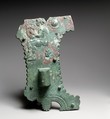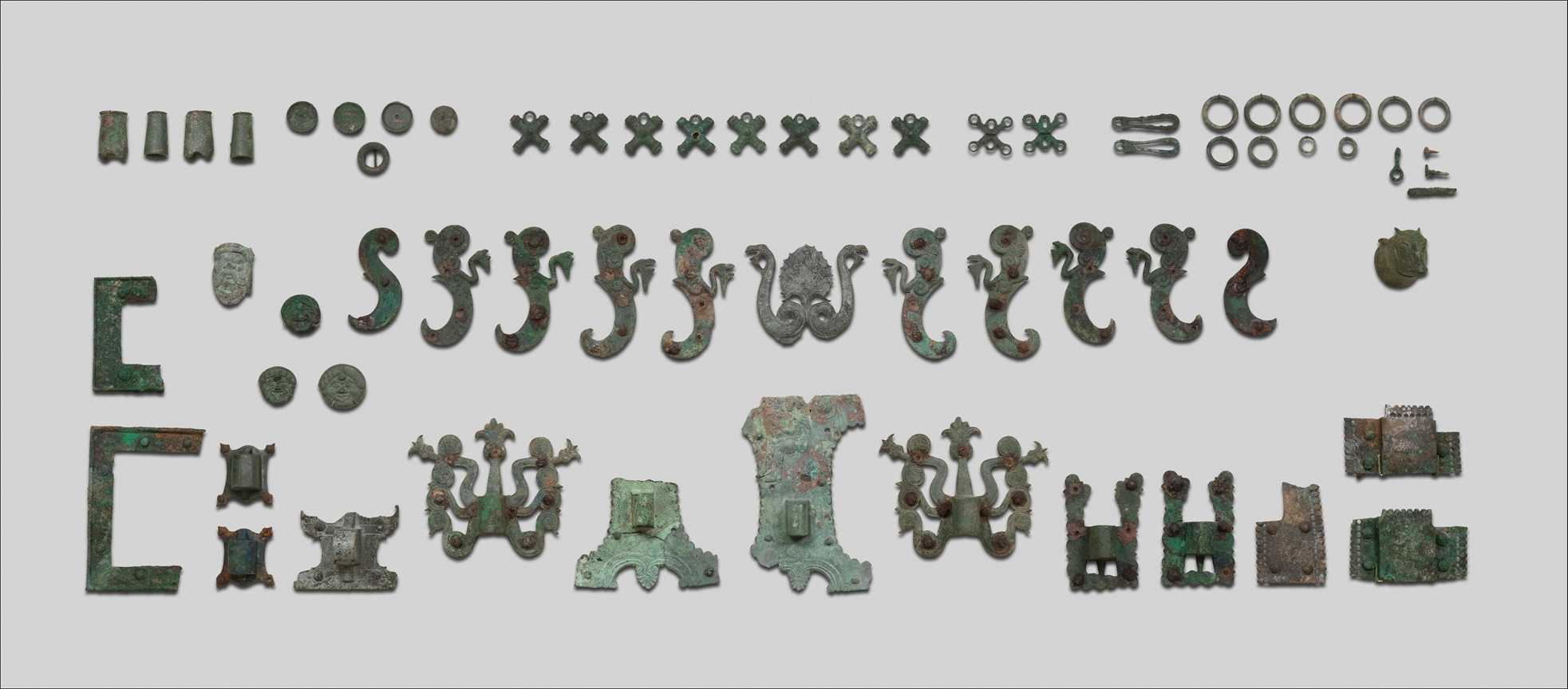Bronze and iron fittings from a cart or chariot
This large collection of bronze fittings, many with their iron or bronze nails still preserved, once belonged to a wheeled wooden cart or chariot. Because all the larger elements have a flat back, we can assume that they came from a vehicle that was basically rectilinear rather than curved like the Monteleone Chariot displayed in this gallery. In a number of instances, the same Etruscan tomb contained both a chariot and a light cart that perhaps served as a hearse to carry the deceased to the cemetery. The precise function of the vehicle represented here is uncertain.
Among the most interesting pieces is the large plate (29.131.3a) showing, in shallow relief, a seated youth playing the lyre. The pendant to this piece (29.131.3b) lacks the upper portion, where perhaps a related figure was once depicted. There are ten S-shaped reinforcement plates, eight of which are decorated with bearded snakes (29.131.3k1-k8). Pairs of these distinctive braces were probably mounted back-to-back against the wooden panels of the vehicle; indeed, some wooden fragments still adhere to them. The same bearded snakes appear on a larger, symmetrical element (29.131.3.q). Since such snakes are often brandished by death demons in Etruscan art, this specific iconographical detail may corroborate the interpretation that this is a funerary vehicle. Other elements, for example the plates with Gorgon heads and the sockets decorated with satyr or ram heads, may reinforce this funerary function. Many other pieces are completely undecorated, and some, for example the bronze rings, may belong to the harness.
Due to rights restrictions, this image cannot be enlarged, viewed at full screen, or downloaded.
This artwork is meant to be viewed from right to left. Scroll left to view more.



